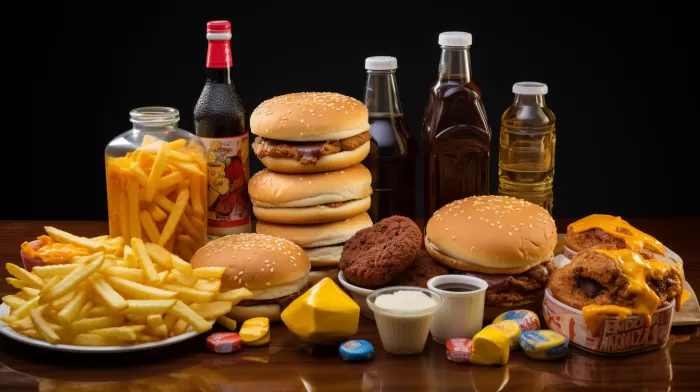Trans fats have long been labeled as the “bad guys” when it comes to our health, but did you know that not all trans fats are created equal? Yes, you read that correctly – there is a significant difference between the naturally derived trans fats found in meat and dairy products, and the artificial trans fats that are the result of a process called hydrogenation. In this article, we will delve into these differences, and discuss why it may be time to reconsider how we label and think about trans fats in our diet.
The Hydrogenation Process
Trans fats can be found in two forms – naturally occurring ruminant trans fats, and industrially produced hydrogenated trans fats. Hydrogenated oils are commonly found in packaged baked goods and fried foods because these fats help increase the shelf life of a product. This process of hydrogenation involves the addition of hydrogen molecules to liquid vegetable oil, creating a solid fat that is less likely to spoil. Unfortunately, these artificial trans fats have been linked to an array of health issues, including cardiovascular problems and high cholesterol.
Natural Ruminant Trans Fats
On the other hand, ruminant trans fats occur naturally in meat and dairy products, such as beef, lamb, milk, and cheese. These fats are derived from the gut bacteria of grazing animals, such as cows and sheep, which partially hydrogenate the unsaturated fats in their diet. It’s important to note that numerous studies have indicated that consumption of ruminant trans fats in moderation does not pose the same health risks as their industrially-produced counterparts. In fact, research has shown that a moderate intake of ruminant trans fats can have health benefits, such as improving satiety and reducing inflammation.
The Need for Clearer Food Labeling
Given the stark differences between naturally derived and artificial trans fats, nutrition experts are calling for more specific food labeling when it comes to trans fat content. As of now, in the United States and Canada, a significant portion of natural trans fat content is included in nutrition label trans fat calculations, which can be misleading for consumers.
Study author Spencer Proctor from the University of Alberta says, “We need a reset in our approach to reflect what the new science is telling us.” By providing clearer information on food labels, consumers can make more informed decisions about the products they consume.
Trans Fats and Government Regulations
In recent years, there have been initiatives from public health agencies and governments to reduce and even eliminate the use of industrially produced trans fats in the food industry. In 2015, the U.S. Food and Drug Administration (FDA) ordered food manufacturers to gradually phase out the use of partially hydrogenated oils – the primary source of artificial trans fats – by 2018.
Additionally, countries such as Denmark, Switzerland, and Iceland have already implemented strict regulations on the use of artificial trans fats in food products. These actions are driven by the overwhelming scientific evidence linking artificial trans fats to increased health risks.
Tips for Reducing Trans Fats Consumption
While it’s essential to understand that not all trans fats are equal, it’s still necessary to be mindful of your overall trans fats consumption. Here are some tips for reducing your intake of artificial trans fats:
- Limit your consumption of packaged baked goods, such as cookies, cakes, and pastries, which are often high in hydrogenated oils.
- Opt for healthier cooking oils, such as olive oil or canola oil, instead of hydrogenated oils or fats high in saturated fats, such as butter or lard.
- Read food labels carefully and look for ingredients like “partially hydrogenated oil,” which is an indicator of artificial trans fats.
- When dining out, choose grilled or baked options over fried foods, as the latter is more likely to be cooked using hydrogenated oils.
In Conclusion
It’s vital to recognize that not all trans fats are created equal. While it’s crucial to limit artificial trans fats in our diet, naturally occurring ruminant trans fats can be part of a balanced and healthy diet. Hopefully, this article will help you make more informed decisions about the foods you consume, and drive home the importance of more specific food labeling when it comes to trans fat content. Remember, knowledge is power, and understanding what goes into our bodies is essential for maintaining our health and well-being.



